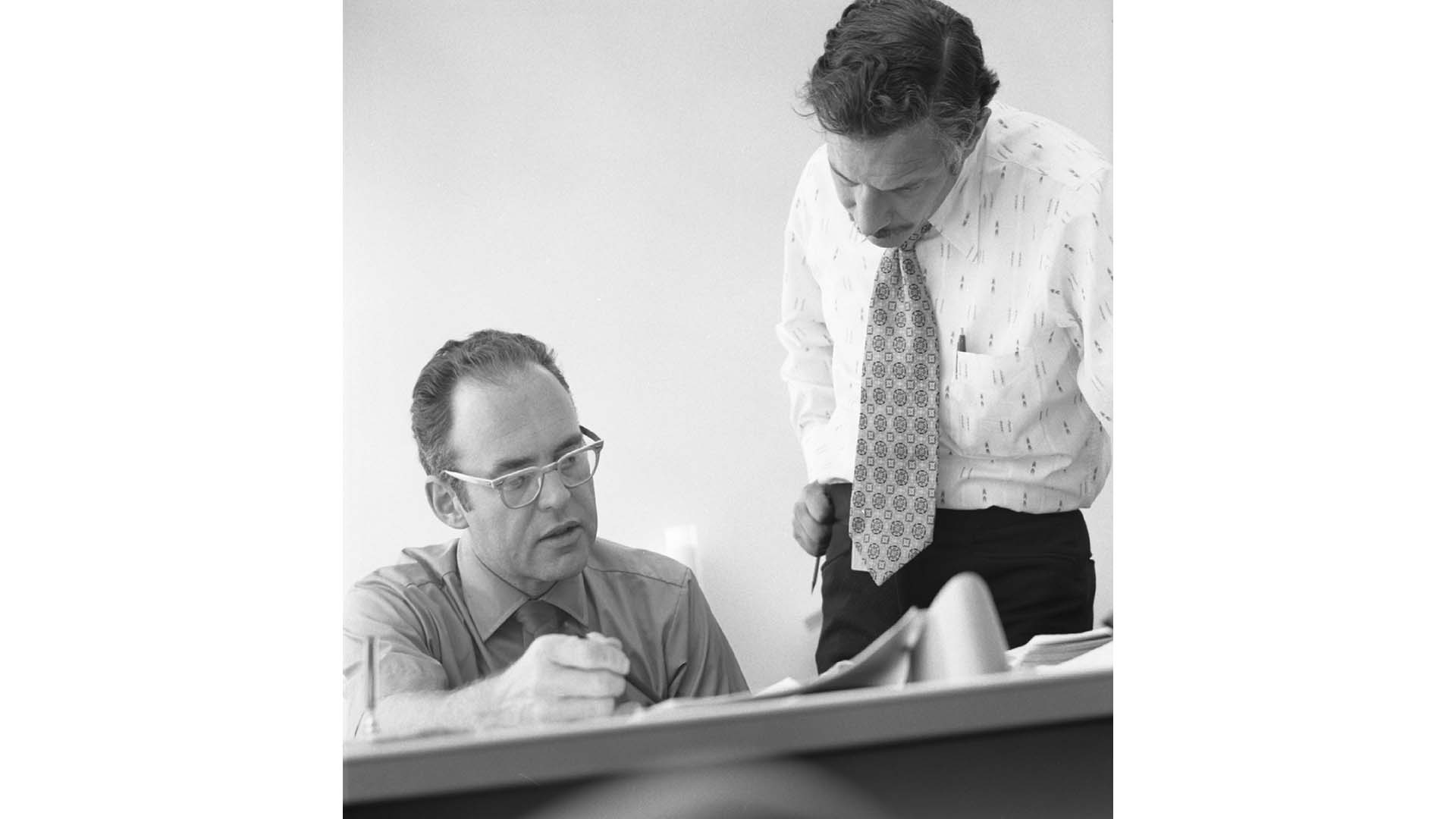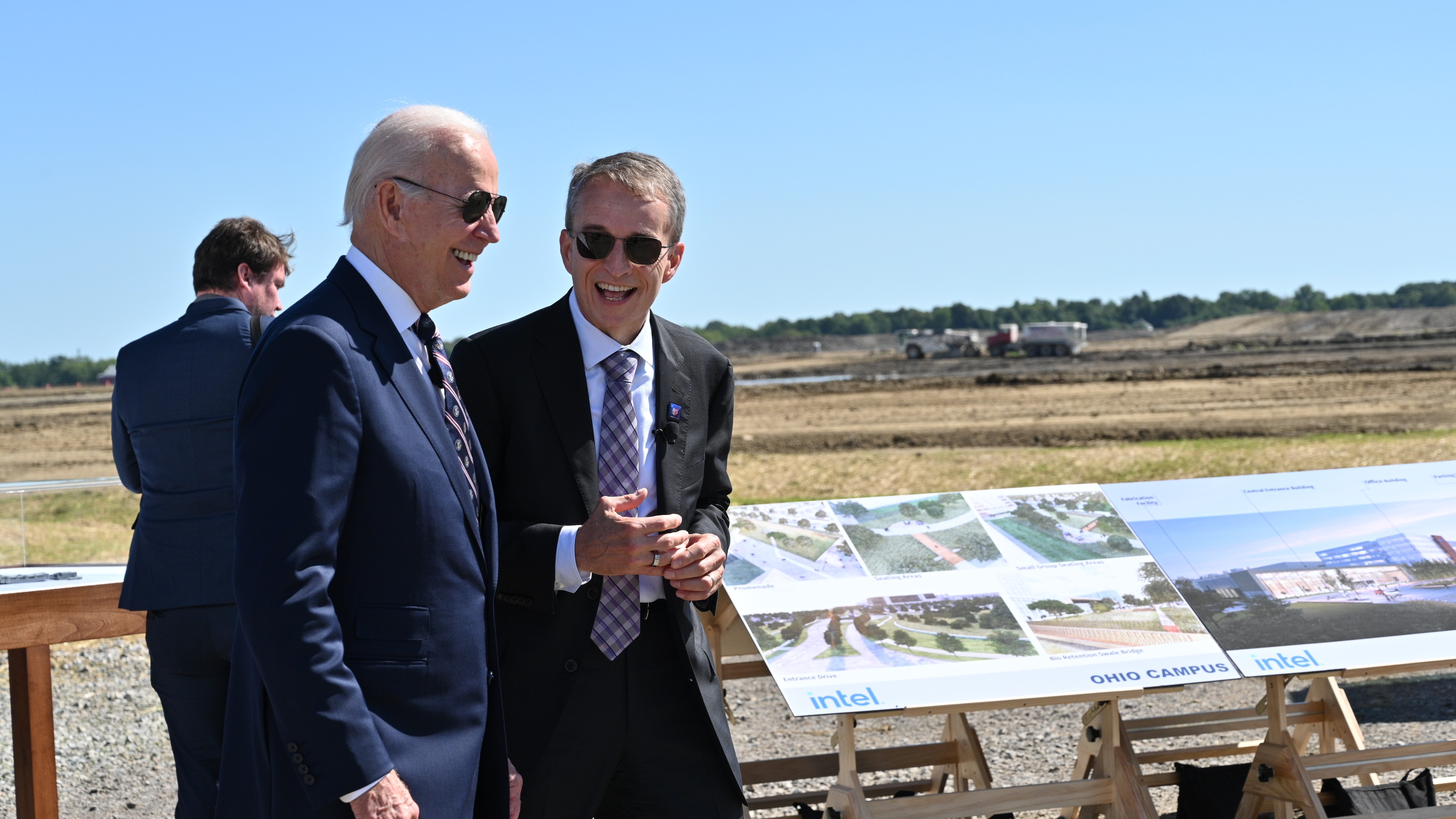Everything you need to know about Intel
An essential guide to Intel, a trailblazer in microprocessor innovation and a foundational force behind the evolution of modern computing and the personal computer industry


Intel has led the semiconductor industry for over 50 years, defining the trajectory of modern computing. As one of the largest and most influential chipmakers globally, Intel has been instrumental in advancing personal computers, powering data centers, and enabling countless electronic devices.
Here, we explore the history, innovations, and far-reaching impact of this tech giant in shaping today’s digital world.
History of Intel

Intel co-founders Gordon Moore (left) and Robert Noyce founded Intel in 1968. Moore would go on to serve as executive vice president, president, CEO, and chairman of the board.
Intel was established in 1968 by Gordon Moore and Robert Noyce, former employees of Fairchild Semiconductor, who initially named their venture NM Electronics. Shortly afterward, the company acquired the rights to the name “Intel,” short for Integrated Electronics, and was officially renamed Intel Corporation.
Intel at a glance

Founded: July 18, 1968
Founders: Gordon Moore and Robert Noyce
Current CEO: Pat Gelsinger (pictured)
Headquarters: Santa Clara, California, USA
Annual Revenue (2023): $54.2 billion
Number of Employees: Approximately 109,800 by the end of 2024
In its early years, Intel focused on memory chips, producing notable SRAM and DRAM products. A key milestone came in 1971 with the introduction of the Intel 4004, the world’s first commercial microprocessor. This product set Intel on a new path, ultimately leading to its dominance in the CPU market.
Intel’s influence grew significantly in the 1980s when IBM chose Intel’s 8088 processor for its first personal computer, establishing the “IBM PC compatible” standard. This decision positioned Intel as a leading supplier for the burgeoning PC industry.
In the 1990s, Intel introduced the Pentium processor and launched the “Intel Inside” marketing campaign, which brought the brand greater recognition among consumers and helped solidify its reputation in the tech industry.
During the 2000s, Intel diversified its portfolio, expanding beyond microprocessors into areas such as data centers, artificial intelligence (AI), and the Internet of Things (IoT). Acquisitions like Altera in 2015 and Mobileye in 2017 have contributed to Intel’s capabilities in AI and autonomous driving technology.
Get the ITPro daily newsletter
Sign up today and you will receive a free copy of our Future Focus 2025 report - the leading guidance on AI, cybersecurity and other IT challenges as per 700+ senior executives
Today, Intel is involved in a range of technologies, including cloud computing, 5G, and advanced chip manufacturing. The company continues to play a significant role in the semiconductor industry and remains influential in developing technologies that support a broad array of digital devices and applications.
What does Intel sell?
Processor technology remains a core area of focus for Intel, with continued investment in innovations like Foveros, a 3D packaging technology that allows stacking multiple chips together for increased flexibility, power efficiency, and performance. Intel’s product portfolio spans consumer and enterprise markets, offering a wide range of high-performance components.

Processor technology remains one of Intel's principle areas of investment and development, including 'Foveros', a 3D packaging technology designed to offer flexibility when combining several chips together.
Central to Intel's offerings are its microprocessors (CPUs), which power desktops, laptops, and servers across industries. These CPUs are further supported by Intel’s range of chipsets, which help manage data flow between the processor, memory, and peripherals, optimizing overall performance.
Intel also develops graphics processing units (GPUs), both integrated and discrete. While its integrated graphics are standard in many consumer computers, Intel’s discrete GPUs are designed for more demanding applications such as gaming, AI processing, and professional visualization.
In storage, Intel produces solid-state drives (SSDs) for consumer and enterprise markets, focusing on high-speed and reliable data storage. Intel’s SSDs are frequently used in data centers, supporting high-performance computing and cloud environments.
For network and connectivity, Intel manufactures network interface controllers (NICs), widely used in servers and data centers, alongside Wi-Fi and Bluetooth chipsets for consumer and IoT devices. These connectivity solutions are essential for wireless communication and contribute to Intel’s presence in mobile and smart home technology.

A bond module carrier containing a single silicon photonics chip, developed to support next generation data centers and 5G deployments reliant on smaller form factors.
Intel also offers silicon photonics technology, which integrates data processing with photonics to enable ultra-fast data transfer over optical fibers. This technology is critical for next-generation data centers and 5G deployments, particularly where compact, energy-efficient solutions are required.
Additionally, Intel provides system-on-a-chip (SoC) solutions, which consolidate multiple functions into single chips for enhanced efficiency. Intel’s SoCs are used in a variety of applications, from smartphones and embedded systems to industrial automation and smart appliances, delivering optimized performance and power management.
With a presence in emerging technologies, Intel is active in artificial intelligence (AI) and machine learning applications, developing both hardware and software solutions that accelerate AI workloads. Furthermore, Intel’s FPGA (field-programmable gate arrays), acquired through Altera, offer customizable processing for industries needing adaptable solutions, such as telecommunications, automotive, and healthcare.
Intel mergers and acquisitions
Intel's strategic acquisitions have played a crucial role in expanding its technological capabilities and market presence. In 2015, Intel made a significant move by acquiring Altera for $16.7 billion. This acquisition allowed Intel to integrate field-programmable gate arrays (FPGAs) into its product lineup, enhancing its ability to offer customisable chip solutions that are critical for various applications in data centers and telecommunications.
RELATED WHITEPAPER

Two years later, Intel further broadened its technological horizon by purchasing Mobileye for $15.3 billion. This acquisition was pivotal in advancing Intel's position in the autonomous vehicle sector, providing essential technologies for driver assistance systems and self-driving cars.
In 2019, Intel continued its push into emerging technologies by acquiring Habana Labs for $2 billion, significantly boosting its artificial intelligence (AI) capabilities with advanced AI processors designed for deep learning applications.
In 2020, Intel acquired Moovit for $900 million, integrating mobility-as-a-service solutions into its portfolio. This acquisition not only expanded Intel's presence in the transportation sector but also underscored its commitment to smart city technologies and the future of urban mobility. These strategic acquisitions reflect Intel's ongoing efforts to diversify its technological offerings and maintain its leadership in the semiconductor industry.
More recently, Intel’s 2021 acquisition of SigOpt, a company focused on model optimization for machine learning, underscored its commitment to supporting AI and data science advancements. SigOpt’s technology aids in improving the performance of machine learning models, further bolstering Intel’s capabilities in AI research and development.
In 2022, Intel acquired Granulate, a developer of real-time performance optimization software, for $650 million. Granulate’s software helps improve the efficiency of cloud applications, addressing the needs of enterprise customers who rely on high-performance computing and want to reduce cloud costs.
Key figures at Intel

Pat Gelsinger and then US President Joe Biden tour the site of Intel's $20 billion manufacturing plant in Licking County, Ohio.
Intel's leadership team has been instrumental in driving the company's innovation and strategic direction.
- Chief financial officer David Zinsner joined Intel in 2022. Zinsner brings extensive financial expertise from his previous roles at Micron Technology and Analog Devices.
- Sandra Rivera is executive vice president and general manager of the data center and AI Group. Rivera has been with Intel for over 20 years, playing a crucial role in advancing the company's data-centric strategy and leading efforts in AI and networking solutions.
- Greg Lavender is chief technology officer and senior vice president of Software and Advanced Technology Group. Lavender, who joined Intel in 2021, leads software development and is responsible for Intel’s software strategy, enhancing its ecosystem in AI, cybersecurity, and cloud computing.
What can customers expect from doing business with Intel?
At the helm is Pat Gelsinger, who returned to Intel as CEO in February 2021. Gelsinger, with over four decades of technology and leadership experience, previously served as CEO of VMware and spent 30 years at Intel, where he was the architect of the original 80486 processor.
For CIOs and IT directors, partnering with Intel offers a strategic advantage that extends far beyond mere hardware procurement. At the core of this partnership is Intel's commitment to innovation, exemplified by its substantial R&D investment of $17.5 billion in 2022.

Michelle Johnston Holthaus, Intel's EVP of Client Computing Group, showing off Intel's Lunar Lake processor range at the Intel Technology Tour in Taipei, May, 2024.
While the initial costs of Intel solutions may be higher, they often offer superior long-term value through performance efficiencies and extended product life cycles, contributing to optimised Total Cost of Ownership (TCO). This financial prudence is complemented by Intel's commitment to sustainability, as evidenced by its achievement of 99% renewable electricity usage in factories by 2023. Such initiatives not only support corporate Environmental, Social, and Governance (ESG) goals but also resonate with the increasing emphasis on responsible business practices at the C-suite level.
Intel also provides transparency in its product roadmap and maintains extensive ecosystem partnerships, valuable assets for forward-thinking IT leaders. These resources enable CIOs and IT directors to plan and align their technology strategies with Intel’s upcoming innovations, ensuring smooth transitions and compatibility with existing systems, ultimately reducing operational disruption.
Rene Millman is a freelance writer and broadcaster who covers cybersecurity, AI, IoT, and the cloud. He also works as a contributing analyst at GigaOm and has previously worked as an analyst for Gartner covering the infrastructure market. He has made numerous television appearances to give his views and expertise on technology trends and companies that affect and shape our lives. You can follow Rene Millman on Twitter.
-
 Geekom Mini IT13 Review
Geekom Mini IT13 ReviewReviews It may only be a mild update for the Mini IT13, but a more potent CPU has made a good mini PC just that little bit better
By Alun Taylor
-
 Why AI researchers are turning to nature for inspiration
Why AI researchers are turning to nature for inspirationIn-depth From ant colonies to neural networks, researchers are looking to nature to build more efficient, adaptable, and resilient systems
By David Howell
-
 Everything you need to know about Lip-Bu Tan, Intel’s new CEO
Everything you need to know about Lip-Bu Tan, Intel’s new CEONews Intel has announced its next CEO in the wake of Pat Gelsinger's retirement, naming former board member Lip-Bu Tan as its new leader months after he quit.
By Nicole Kobie
-
 Intel CEO Pat Gelsinger announces retirement
Intel CEO Pat Gelsinger announces retirementNews Gelsinger’s departure comes amid a tumultuous period at Intel
By Ross Kelly
-
 AMD to cut around 1,000 staff to focus on "growth opportunities"
AMD to cut around 1,000 staff to focus on "growth opportunities"News The AMD layoffs come after rival Intel cut staff on the back of flagging AI returns
By George Fitzmaurice
-
 Meta layoffs hit staff at WhatsApp, Instagram, and Reality Labs divisions
Meta layoffs hit staff at WhatsApp, Instagram, and Reality Labs divisionsNews The 'year of efficiency' for Mark Zuckerberg continues as Meta layoffs affect staff in key business units
By Ross Kelly
-
 The power and the pain: Looking forward so you’re not held back
The power and the pain: Looking forward so you’re not held backAvoiding server modernization may seem like a cost-saving strategy, but the hidden risks of downtime, security breaches, and operational inefficiencies can quickly become far more costly…
By ITPro
-
 Modernization: Nothing to fear except failing to future-proof
Modernization: Nothing to fear except failing to future-proofAs businesses face mounting pressure to innovate while maintaining daily operations on tight budgets, modernization has become a necessity, not a luxury
By ITPro
-
 Five ways to drive innovation at the edge
Five ways to drive innovation at the edgeWhitepaper How an effective edge strategy can generate new value for your organization
By ITPro
-
 Better together
Better togetherWhitepaper Achieve more with Windows 11 and Surface
By ITPro